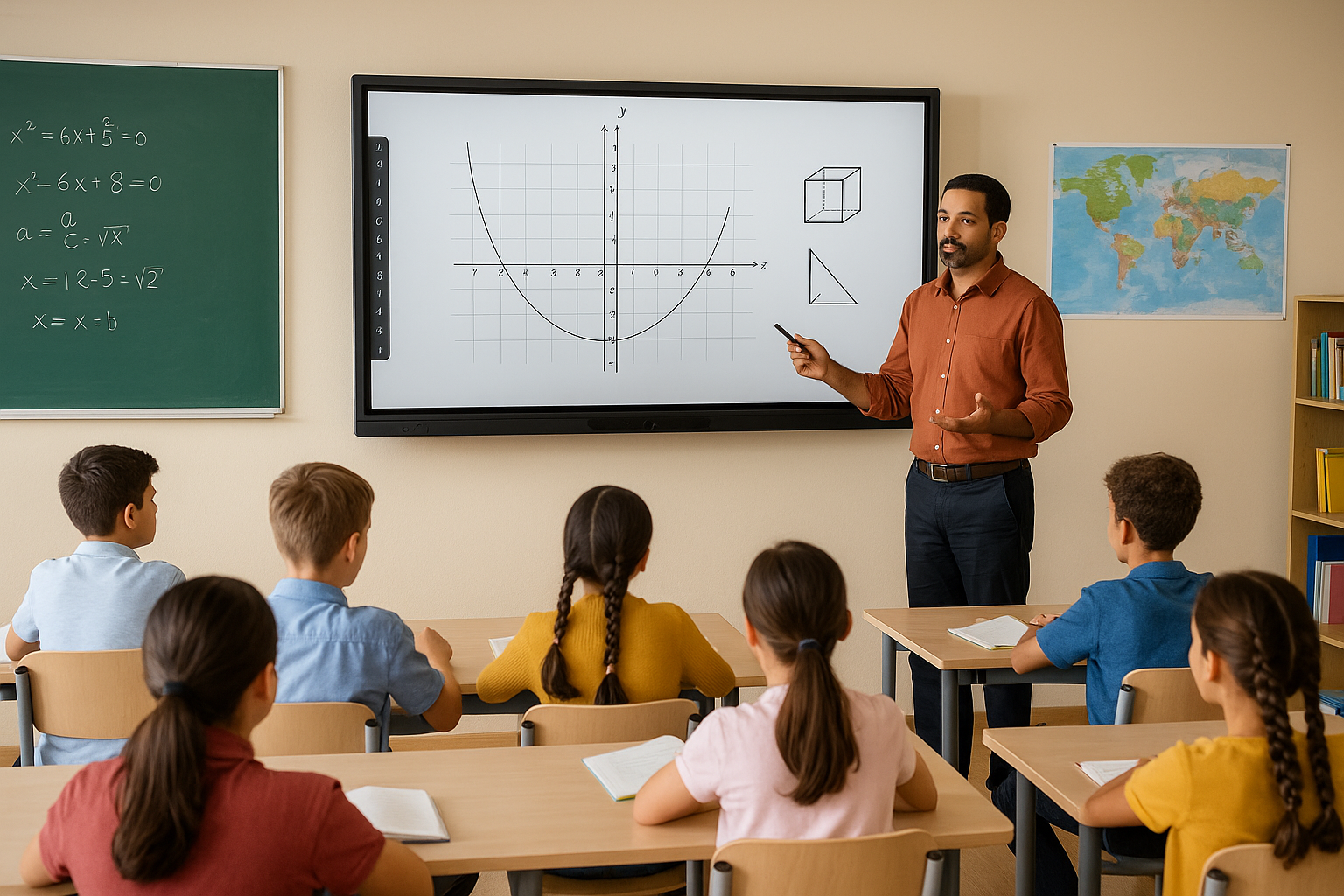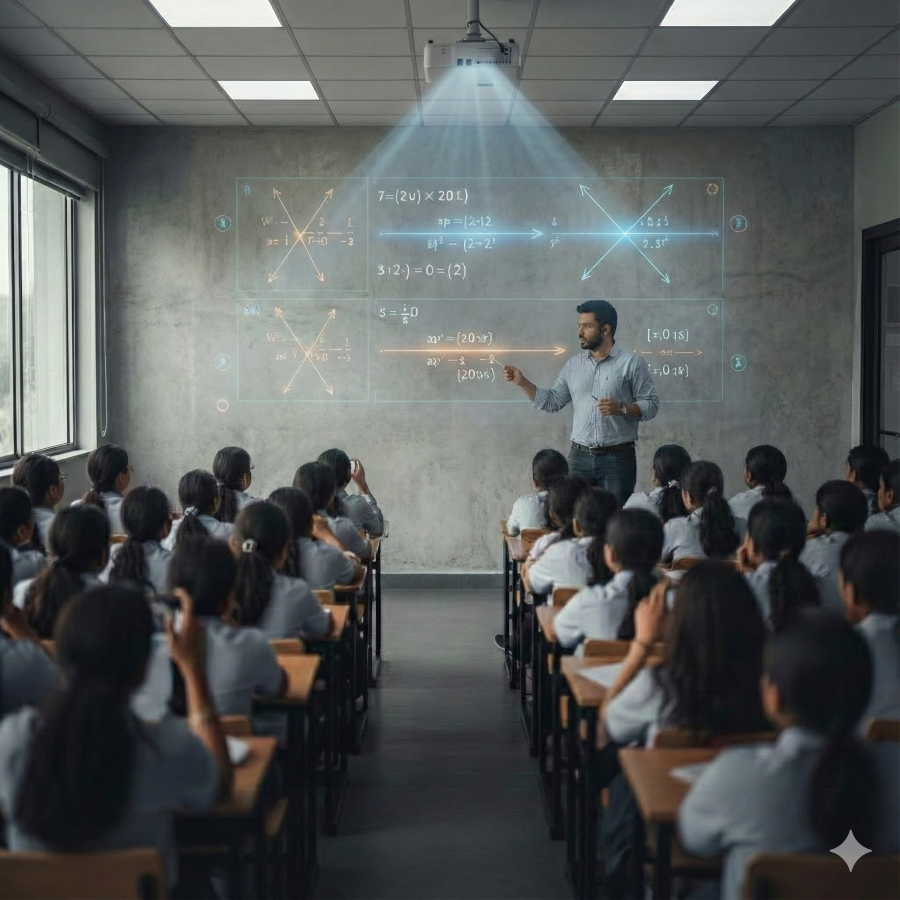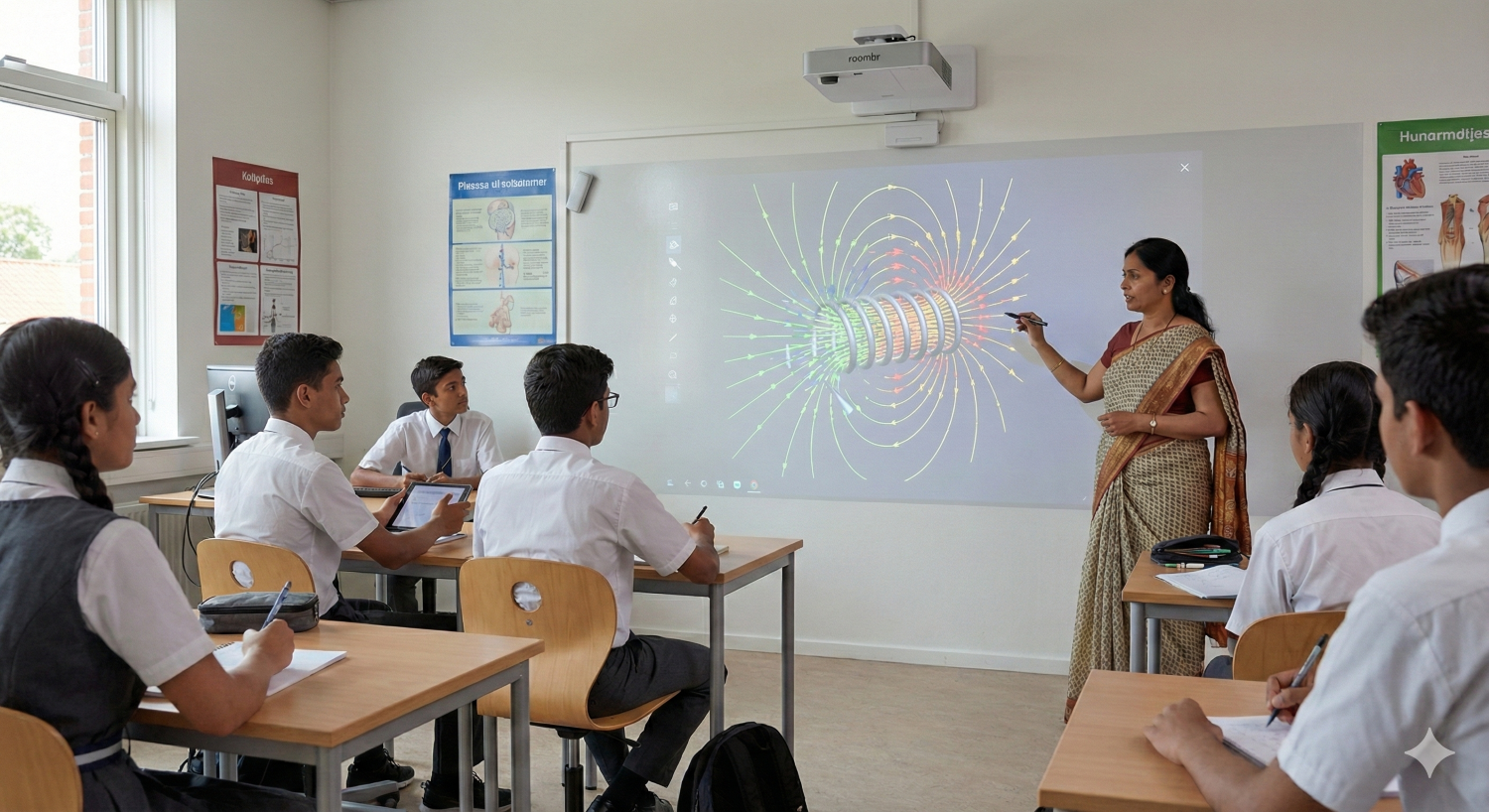Do Touchscreen Smart Boards for Classrooms Help Teachers? Myths & Truths

Modern classrooms are changing. But somewhere between smart upgrades and real student outcomes, many teachers are still struggling. They’re often handed new tools, touchscreen boards, tablets, learning platforms, without enough time, training, or clarity on how these tools actually improve their teaching.
Among all the edtech investments made in recent years, smart boards for classrooms have received the most attention. But do they really make a difference?
Let’s separate myth from truth and uncover what actually works for real-world educators.
The Real Problem: Why Teaching Tools Are Often Misunderstood

Across India especially in schools and higher-ed institutions digital infrastructure has improved. But teaching outcomes haven’t always followed. Why?
Because too often, the tool isn’t the problem. The way it's implemented is.
Many schools adopt digital teaching aids without first asking: Will this fit into a teacher’s daily routine? Can it survive the reality of a high-footfall classroom? Will it work with limited infrastructure?
Here’s what usually goes wrong:
- Schools invest in boards that are difficult to use or maintain.
- Teachers receive patchy training, or none at all.
- Devices go unused or become white elephants after the first few weeks.
The result? Digital fatigue, teacher pushback, and wasted budgets.
This raises an important question: Can digital smart boards for classrooms solve these pain points, or are they just another piece of tech that gets sidelined?
Let’s look at the most common myths holding schools back.
Myths About Touchscreen Smart Boards in Schools
Myth 1 – “They’re Too Complicated for Teachers”
It’s a common fear. But the reality is that most teachers don’t resist technology, they resist bad technology.
Truth: Today’s smartboard touchscreen devices are designed to be as simple as a smartphone. Roombr, for example, requires no extensive technical training. Just power it on, and you’re teaching—writing, drawing, switching apps—within minutes.
When boards are intuitive, teachers use them. When they’re clunky, they don’t.
Myth 2 – “They Operate Only in High-Tech Schools”
This used to be true. Not anymore.
Truth: The best smart boards for schools today are built for Indian conditions—Tier 2 and Tier 3 cities, low-connectivity zones, and even single-teacher classrooms.
Unlike many solutions, Roombr’s digital classroom setup, for instance, works reliably even without continuous internet, functions on regular wall surfaces, and performs smoothly despite dust, heat, or glare. This makes it ideal for Indian classrooms.
Smart doesn’t have to mean fragile.
Myth 3 – “Students Get Distracted by Screens”
Yes, screens can distract. But so can chalkboards if the content isn’t engaging.
Truth: When used interactively, smart boards for classrooms increase attention. They allow for:
- Group problem-solving
- Live annotations
- Quick polls and quizzes
- Visual learning for all types of learners
Students are already used to touch interfaces. A digital smart board speaks their language. All it takes is a well-planned approach and the right content.
Myth 4 – “They're All the Same—Why Spend More?”
Smart boards for classroom often look similar. But under the hood, they’re not.
Truth: Not all boards offer the same quality. Some use slow, outdated sensors. Others don’t support multi-user input or cloud integration. That’s why schools that focus only on price often end up replacing their boards within two years.
Roombr’s board, for example, comes with dual cameras, one-tap recording, and seamless cloud sharing—designed not just for today but for tomorrow’s classrooms.
Myth 5 – “All Digital Boards Are Touch-Enabled”
Here’s the big surprise: Many “digital boards” don’t let you write or interact with them at all.
Truth: Some boards are glorified LED screens. A true smart board designed for classroom use offers:
- Writing with a stylus or finger
- Dragging and dropping content
- Zooming in on diagrams
- Multiple students interacting at once
Roombr’s IR-powered touchscreen delivers fluid, accurate touch response across a wide display—functioning like a tablet, but purpose-built for classroom teaching.
Myth 6 – “More Expensive Boards Always Mean Better Touch”
It’s tempting to equate higher cost with higher quality, but that’s not always the case.
Truth: Some smart boards for schools are priced high because of brand legacy or unnecessary features. Others, like Roombr, offer better touch responsiveness, more classroom-specific tools, and reliable performance at a fraction of that cost.
In other words, choose based on what your teachers need, not just the price tag.
How to Choose a Smart Board for Classroom that Teachers Will Use
A smart board is only smart if teachers want to use it. Here’s what to look for:
✅ Ease of Use
Can a teacher switch between tools, apps, and inputs without calling the IT team? If not, it won’t last long in real classrooms.
✅ Built-in Tools
Boards should come with useful tools, like timers, annotation modes, and auto-save recording. Roombr’s built-in lesson recorder, for example, saves each class to the cloud instantly.
✅ Support for Hybrid Learning
With dual cameras and screen sharing, Roombr supports both in-class and remote learners. A must-have for blended education.
✅ Durability & Visibility
Classrooms can be harsh. Boards should resist glare, heat, and dust. The screen must be visible from the last bench, even in bright daylight.
✅ Training & Support
The best board is the one that works on Day One. Roombr is built with teachers in mind—just connect, switch it on, and start teaching.
Bottom Line
Touchscreen smart boards for classrooms can help teachers, but only when they’re chosen thoughtfully. Many boards fall short because they’re not built for the realities of Indian education. The right one saves time, reduces effort, and enhances classroom outcomes.
Discover an All-In-One Alternative to Smart Board for Classrooms
At Roombr, we believe technology should simplify teaching, not complicate it. That’s why our state-of-the-art alternative to smart board for classrooms is designed from the ground up to meet real needs, not just tick boxes.
Tired of juggling multiple devices in class? Roombr replaces your smart board, projector, webcam, and recording tools—all in one compact solution. Built for real Indian classrooms.
Book a free digital classroom demo today and see how seamless teaching can be.
Foziya Abuwala
Share
Step Into the future of
Education with Roombr

















